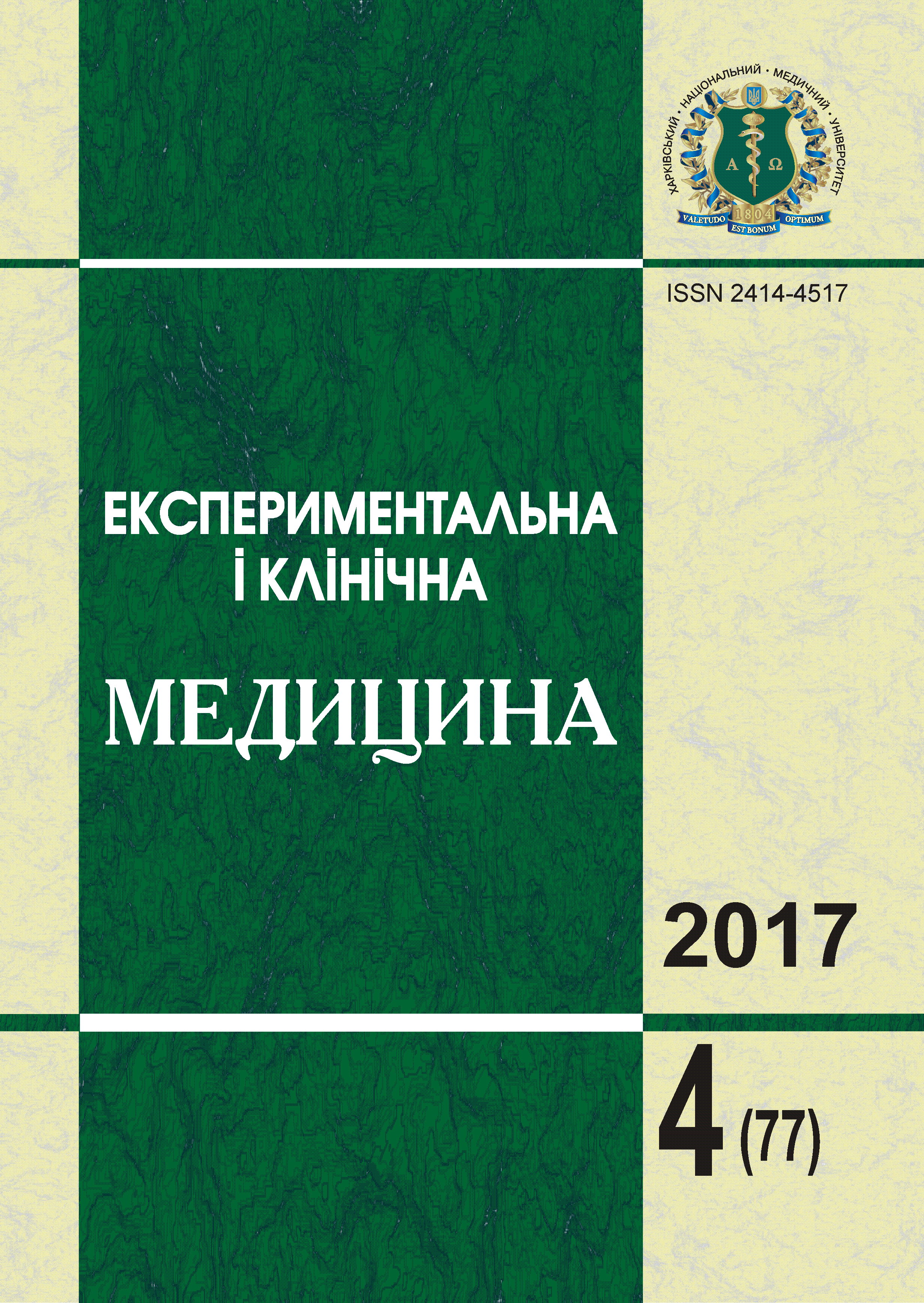Abstract
The aim of the study was to compare the effectiveness and safety of postoperative analgesia in gerontologic patients with polytrauma. All patients, depending on the applied scheme of postoperative analgesia, were divided into 3 groups. In group 1 patients received morphine 10 mg with the frequency needed for effective analgesia, in group 2 – nalbuphine 10 mg, in group 3 – a combination of the central inhibitor of cyclooxygenase (COG) infulgan with rheumoxicam. The study was conducted on 1, 3, 5 and 7 days after surgery. We studied the level of pain sensation for visual analog scale, concentration of stress markers, taking into account the daily need for analgesics, the frequency of their administration, the side effects of drugs for analgesia, the duration of effective analgesia. It was found that the effectiveness of all three regimens of postoperative anesthesia in gerontologic patients with polytrauma is practically the same, but the use of nalbuphine has an advantage over the use of morphine, which is characterized by such dangerous side effects as respiratory depression. Therefore, it is optimal to use a combination of central and peripheral СOG inhibitors of infulganum and rheumoxicam, since such a scheme reduces the need of opiates and avoids their dangerous side effects.References
Akhaladze N.G., Ena L.M. (2009). Vzaimosvyaz nekotorykh form khronicheskoy patologii i biologicheskogo vozrasta. Problemy stareniya i dolgoletiya. 18, 2: 187–199 [in Russian].
Gumanenko E.K. (1998). Travmaticheskaya bolezn – sovremennaya kontseptsiya lecheniya tyazhelykh sochetannykh travm // Problemy politravmy. Lecheniye mnozhestvennykh i sochetannykh povrezhdeniy i perelomov: Materialy yubileynoy konferentsii. Smolensk. 23–24 [in Russian].
Chepelevs'ka L.A., Lyubinets O.V. (2009). Prohnozni tendentsiyi smertnosti naselennya Ukrayiny. Visn. sots. hihiyeny ta orh. okhorony zdorov’ya Ukrayiny. 3: 10–15 [in Ukrainian].
Lytkin M.I., Petlenko V.P. (1998). Metodologicheskiy analiz teorii tpvmaticheskoy bolezni. Voyenno-meditsinskiy zhurnal. 41: 11–14.
Zhebrovs'kyy V.V., Smuhlov Ye.P., Hryvenko S.H., Tarhonya L.V., Smuhlov V.Ye. (2007) Kardiometabolichna terapiya ta yiyi mistse v poperedzhenni sertsevo-sudynnykh uskladnen' u heriatrychnykh khirurhichnykh khvorykh. Shpytal'na khirurhiya. 2: 20–22 [in Ukrainian].
Chekman I.S., Maksymchuk O.O., Horchakova I.O. (2009). Pokhidni yantarnoyi kysloty yak likars'ki zasoby: herontolohichnyy aspekt. Ratsional'na farmakoterapiya v heriatriyi: materialy nauk.-prakt. konf. (13 zhovtnya). K. 65 s [in Ukrainian].
Chepkiy L.P., Usenko L.V. (1994). Heriatrychna anesteziolohiya ta reanimatsiya. K.: Zdorov’ya. 256 s.
Volikov I.A. (2008). Sravnitelnaya otsenka razlichnykh variantov uprezhdayushchey analgezii pri operatsiyakh u gerontologicheskikh bolnykh. Bіl. znebolyuvannya і іntensivna terapіya. 1: 48–53.
